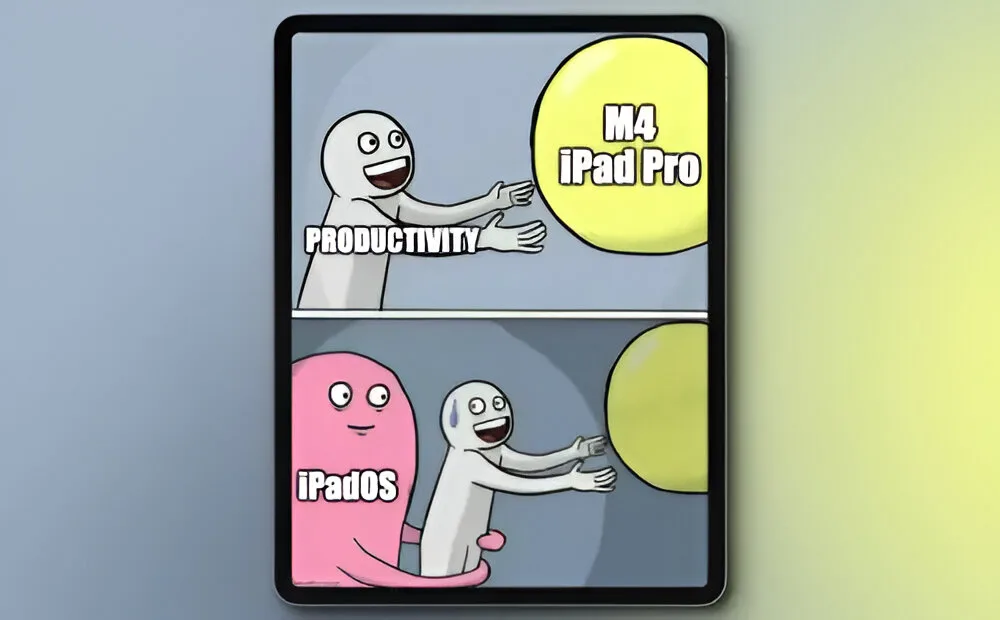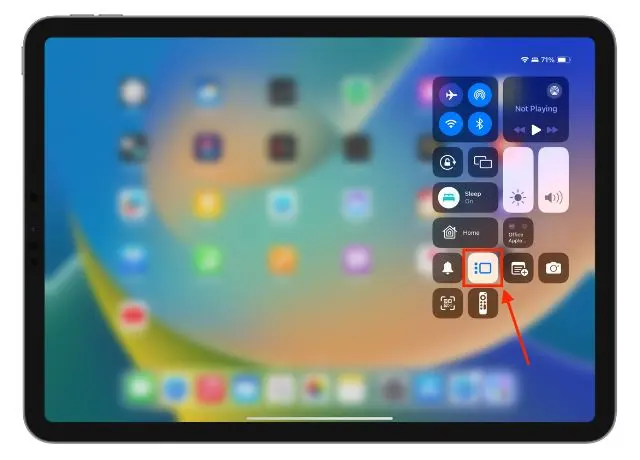
The standout feature of Apple’s Let Loose event was the unveiling of the new iPad Pro equipped with the powerful M4 chip. This chipset, utilizing a cutting-edge 2nd gen 3-nanometer fabrication process, delivers exceptional performance. Apple asserts that the M4 is twice as potent as the M2 chip in CPU processing and is well-equipped for handling advanced AI tasks such as running generative AI models. With the chip now available, its benchmarks are starting to appear online. Surprisingly, these leaks suggest that the M4 iPad Pro surpasses the performance of the Mac Studio with the M2 Max chipset, a desktop computer costing around $2,000.
Achieving superior performance in a device as thin as 5.1mm is a remarkable accomplishment, worthy of applause for Apple. However, the question remains: can users truly harness this power? The answer lies in the capability of iPadOS, which must be equally advanced to fully utilize the iPad’s potential.
iPad Pro – V8 Engine in a Corolla

Prior to the introduction of M-series chips, Apple viewed iPads as essentially extensions of iPhones. The company struggled to define the role of iPads within its product lineup, often equipping them with the same chipsets found in iPhones, albeit sometimes overclocked, essentially making iPads larger versions of iPhones. However, the introduction of Apple Silicon marked a significant change for iPads. The inclusion of the M1 chip in the first iPad Pro equipped with this technology was a game changer. Not only was it 50% more powerful than the previous generation iPad, but it also outperformed the MacBook Pro with an Intel i9 Processor.
When the first iPad Pro with the M1 chip was released, there were some who felt that the chip was overkill for the device’s hardware. This sentiment has persisted to some extent even today. The M4 chip, found in the latest iPad Pro models, is incredibly powerful for such a thin and fanless device. According to Geekbench 6 benchmarks, each core of the M4 chip in the iPad Pro (1TB) runs at 4.4GHz. With a single-core score of 3,767, the M4 chip boasts the highest score ever achieved by a consumer-centric chip in benchmarks.
But this raises the question: in what scenario is such peak performance truly necessary? If you belong to the small group of iPad power users who engage in 3D rendering, video editing, and other resource-intensive tasks on your iPad, then it certainly makes sense. However, for the majority of users, this level of performance may not be necessary. Apple has been positioning the iPad Pro as a device tailored for professionals.
However, can the iPad Pro genuinely be considered a professional device? The lack of additional ports and a scarcity of professional-grade apps are significant drawbacks, in my opinion. Even if the hardware aligns with your professional needs, the limitations of iPadOS are a major letdown.
Apple’s Reluctance to Level up iPad’s Software to Its Hardware
I think it’s widely agreed that iPadOS, as it stands, is rather counterintuitive, lacking in professional features, and falls short in terms of multitasking capabilities. It’s a significant limitation for the iPad as a product. Before the introduction of M-series chips and iPadOS, Apple held back the iPad’s performance to prevent it from encroaching on Mac sales. However, those concerns are now outdated. The iPad Pro with the M4 chip is faster than current-generation MacBook Pro models and even the Mac Studio.
When iPadOS was launched in 2019, many saw it as more than just a rebranding of iOS, but rather a significant step towards making iPads truly versatile devices that could bridge the gap between a Mac and an iPhone. However, fast-forwarding five years, not much has changed. Stage Manager was introduced in 2022 to address the demand for improved multitasking on iPads. Nevertheless, it remained a half-baked feature that most users didn’t find compelling.

If you’ve ever attempted multitasking on an iPad, you’ll understand how restrictive iPadOS can be. You’re limited to displaying only four apps on the screen, and there’s no way to move apps or windows around freely.
In addition to its multitasking limitations, iPadOS has several other shortcomings. Both the home screen and lock screen are underwhelming and in need of a redesign. Apple could streamline the placement of icons and simplify both screens. Personally, I preferred the interface of the lock screen and home screen in iPadOS 14.
It was clean, minimal, and free of bells and whistles, aiming to avoid the overwhelming nature of today’s screens. However, this simplicity came at the cost of widgets. I believe Apple can find a way to blend widgets with simplicity.

Another feature lacking in iPadOS is an Always-On display. Additionally, Apple should enhance the Control Center on iPad. Currently, accessing the Control Center can be challenging for left-handed users operating the iPad with one hand.

iPadOS feels unfinished and it seems Apple didn’t consider the powerful hardware of iPads during its design. The iPad team at Apple appears to have prioritized the wrong aspects of resource allocation. For me, usability should outweigh capability. The iPad’s hardware is already more than capable, but Apple’s extreme focus on size, weight, thinness, and performance is where they falter in their commitment to iPads.
With WWDC approaching next month, I have high hopes for iPadOS. I’m optimistic that Apple will introduce meaningful features and overhaul the OS. However, I’m also cautious because the AI hype might overshadow these advancements.

0 Comments